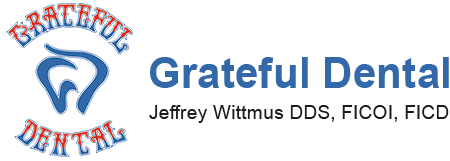Bioactive Materials have been used in dentistry for over one-hundred years. Calcium Hydroxide, also known by its most popular trade name, Dycal, is the most common. When placed in a tooth with a deep carious lesion, it causes the pulpal tissue to withdraw from the area where bacteria was removed. It actually stimulates the tooth to lay a dentinal bridge or thicken the layer of tooth protecting the nerve!
By definition, bioactive materials have an effect on or elicit a response from living tissue, organisms, or cells, such as inducing formation of hydroxyapatite. Hydroxyapatite makes up the matrix and is the essential inorganic ingredient of teeth. Hydroxyapatite molecules crystallize, or group together, and is what makes teeth rigid.
There is a lot of enthusiasm to use modern bioactive materials in dentistry because of all of the benefits that these materials are providing . The materials allows for a continuous exchange of calcium, phosphate, and fluoride ions between the saliva, tooth, and bioactive materials. Water is the source of life. Biochemistry and bioactivity only occur in the presence of water. Only moisture friendly materials that transport water have the potential for bioactivity and can stimulate apatite formation with release and recharge of essential tooth-building minerals as calcium, phosphate, and fluoride. Bioactive materials are able to form a tight seal between the tooth and restorative material by forming apatite, which keeps margins continuously sealed, preventing micro-leakage and subsequent secondary caries (cavities). Bioactive materials also stimulate the remineralization process which re-establishes minerals lost to caries in enamel and dentin. Just like teeth, bioactive materials are able to respond to changes in the environment: when the pH in the mouth is low (acidic), bioactive materials release calcium, phosphate, and fluoride ions and mix with saliva. When the pH increases, these ions that are available in the saliva are able to precipitate in the form of hydroxyapatite or fluorapatite onto the tooth, maintaining the chemical composition and integrity of the tooth.
Bioactive technology, provided by materials like Activa from Pulpdent and other products, brings to our modern dental offices the ability to not just fill holes in teeth, but to actually heal teeth with our restorations.


